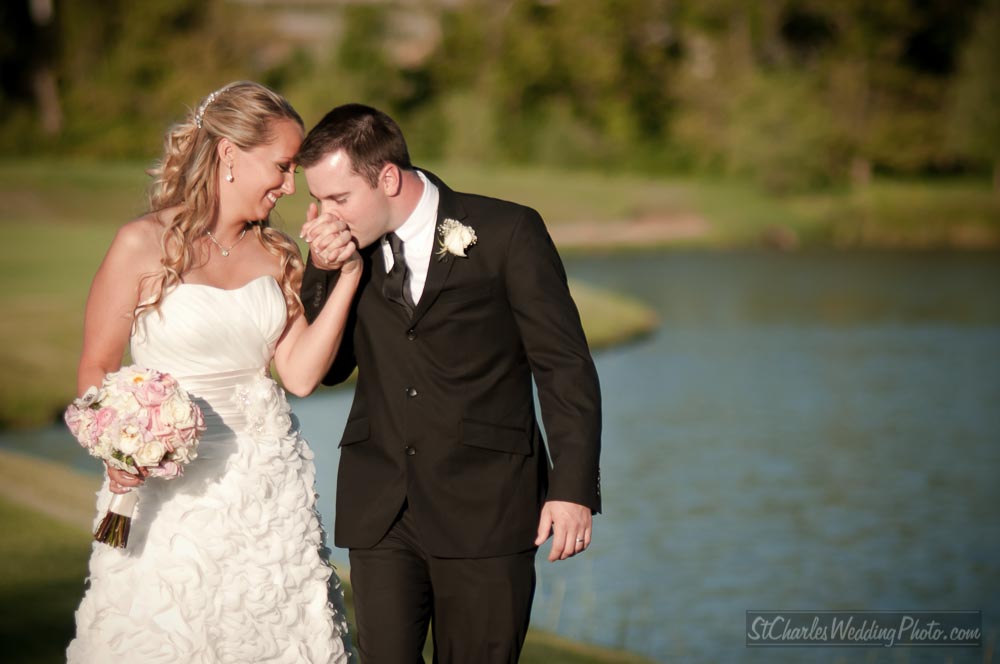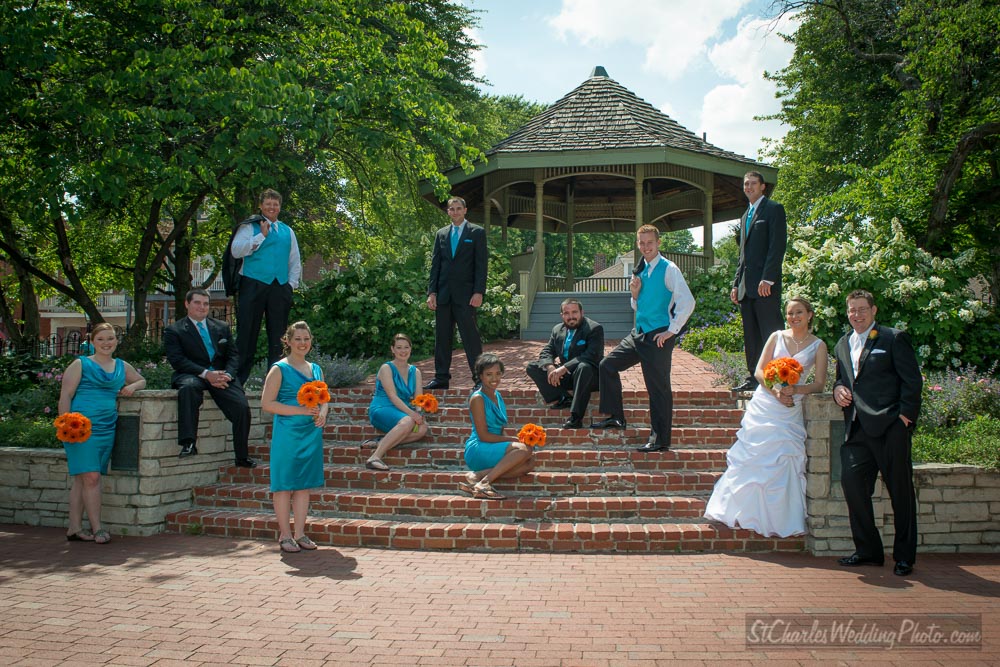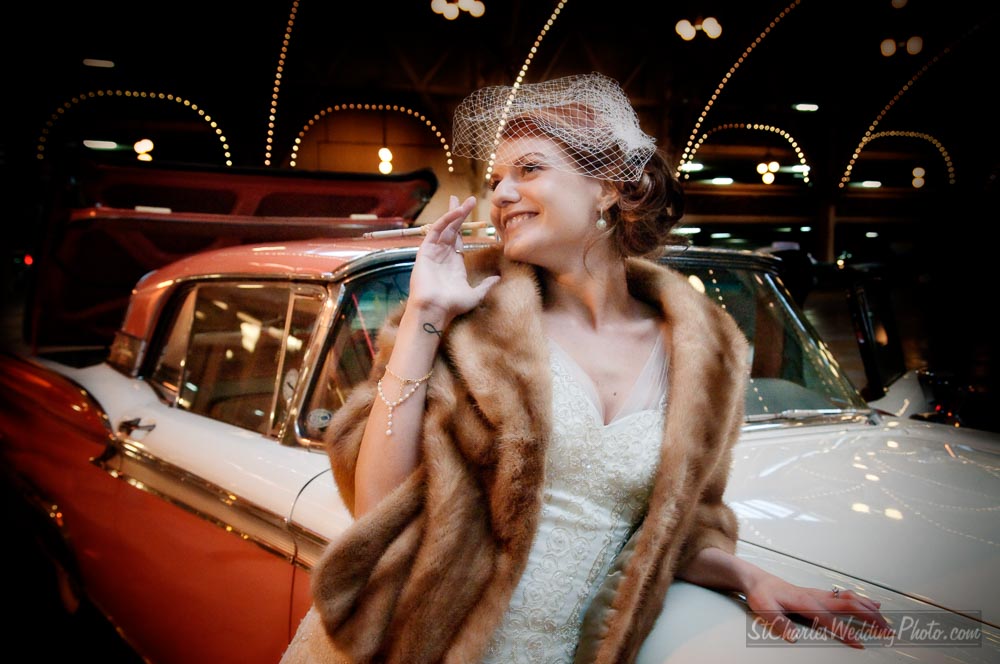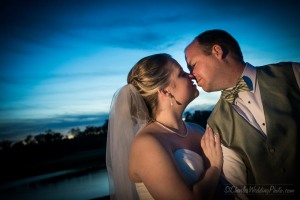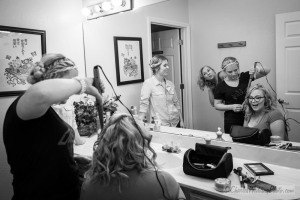Most inexperienced photographers and almost all friends-with-a-camera do little or no enhancement to the images after they’re shot. Enhancement takes a lot of time and is an art in itself. They typically explain it by saying they “get the shot right in the camera.” Yes, you can expose carefully and get a pretty decent image without doing any additional work after the fact. But do you get the BEST result this way?
Let’s look at a quick example. Two versions of the same photo. The photo on the left is exposed well with a good range of tones from bright to dark. If it was exposed any brighter we’d lose subtle details in the bride’s dress.
The photo on the right has has some careful enhancement by bringing out details in the shadow and highlight areas and adding some contrast. I took it further and cropped it to remove wasted space and finally manually “painted” areas (such as faces) brighter or darker to draw the eye and adjust for uneven illumination.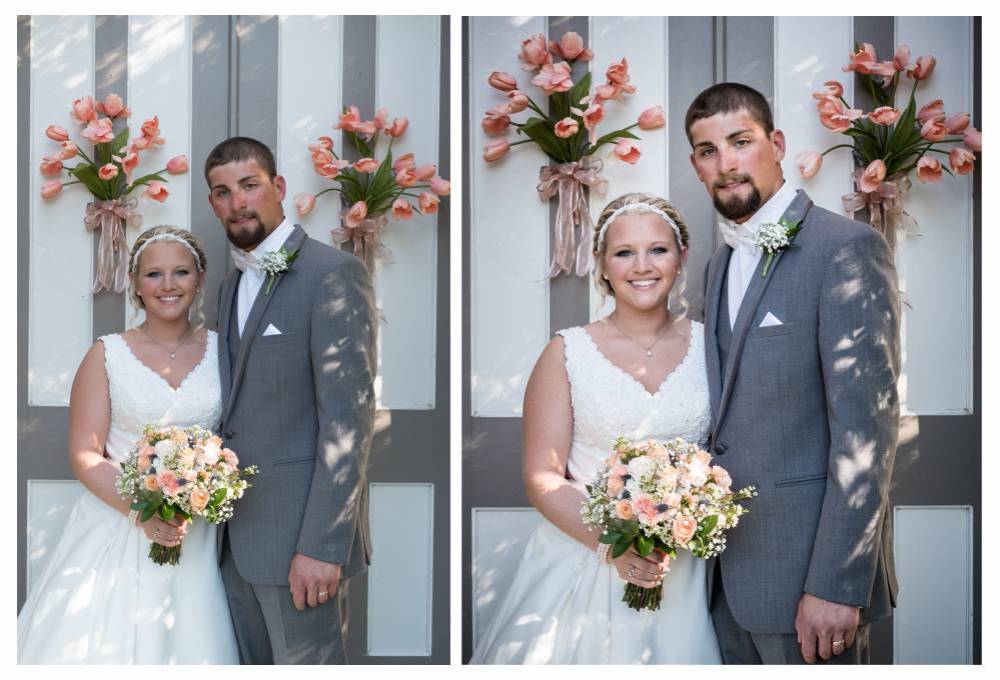
Enhancement can actually change the way an image is captured in the first place. Ever notice how popular those blown out skies are in portraits these days? It’s done because it’s easy, not because it actually looks better – although tastes differ. The photographer can simply expose for a face and let everything else wash out.
However, when you have enhancement in mind from the start, you can expose the image for the sky or a white wedding dress, retaining details, and bringing up the subject for a nice finished image that looks very natural.
In the first image the photo was exposed for the couple’s faces. Notice how washed out the church and sky look in the background. This is a best case scenario out of the camera. But when you know you’re going to enhance an image – using it as a tool rather than as a fix – you can expose a darker image that keeps detail in the sky and then brighten the couple afterward for a very nicely balanced image that looks better than the best case straight from the camera.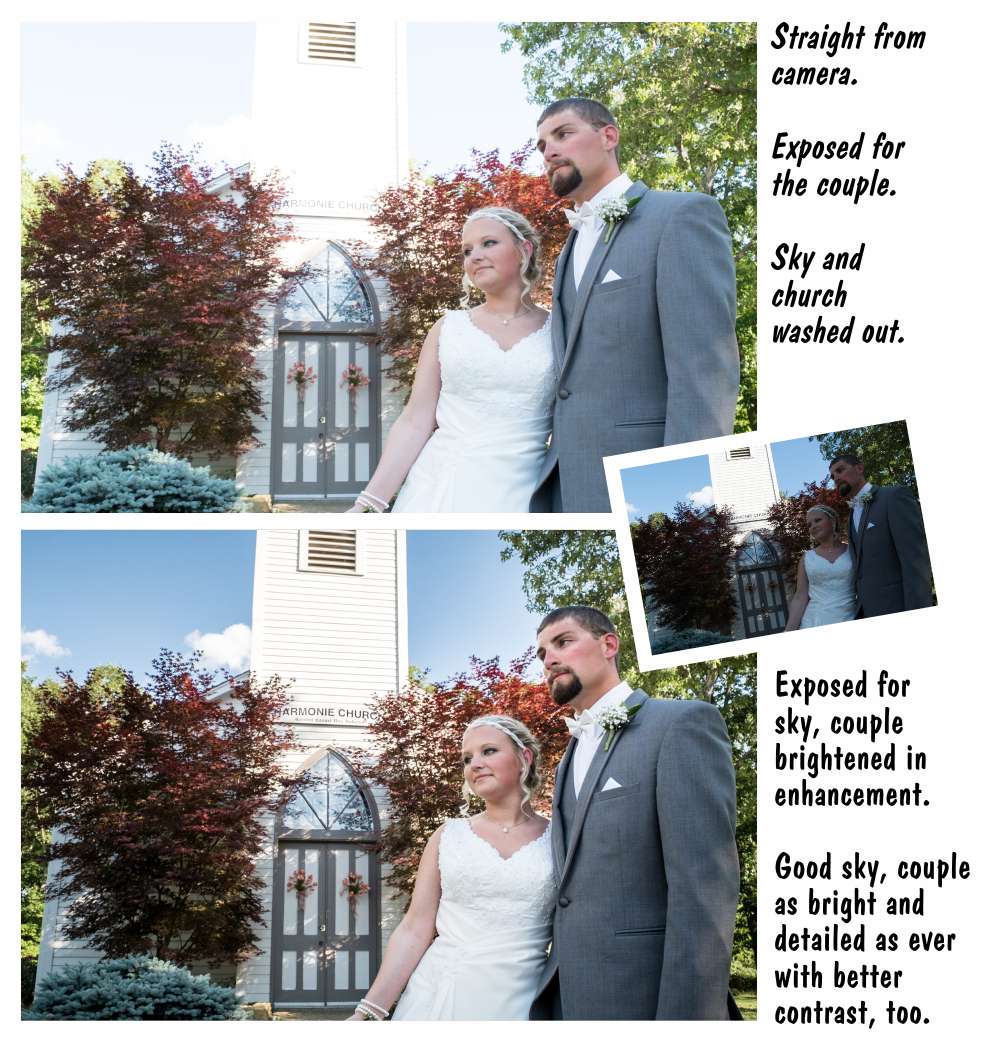
Yes, you can add flash to the mix to get a well exposed subject and blue skies – and sometimes that’s the right solution – but there are plenty of valid reasons to shoot natural light and enhance in post. Enhancement is just one more tool in your kit.
Even when the images are exposed as well as can be in the camera it doesn’t mean that it gives the best photo. Careful enhancement brings out details and gives a more finished look. Only you can decide if better photos are worth the additional cost of a higher end photographer. To couples who value the quality of their wedding photography it is.
